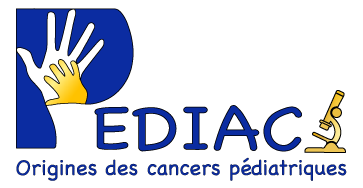Residential proximity to vineyards and childhood cancer risk – GEOCAP 2006-2013
Exposure to pesticides is suspected of being a risk factor for several pediatric cancers, in particular acute leukemia (ALL). Most studies carried out in France and abroad have focused on the link between children’s risk of developing this disease and the mother’s use of pesticides at home, during and after pregnancy. The risk of environmental exposure to pesticides, due to geographical proximity to agricultural plots, has been less well documented.
In order to advance knowledge on the subject, J. Clavel‘s EPICEA team has set up a study to assess the risk of LA in children living near vineyards, a crop subject to intensive pesticide use (cf. Mancini et al. 2023, Inserm Press Release). This study is part of the GEOCAP (geolocalization of pediatric cancers) research program on the role of environmental factors in pediatric cancers.
This nationwide case-control study, conducted over the period 2006-2013, demonstrated an association between the risk of developing ALL, particularly lymphoblastic ALL, and the area of vineyards within 1000 m of the residential address: on average, for every 10% increase in the proportion of vineyards within the 1000 m perimeter, the risk of ALL increased by almost 10%. These results remained unchanged when other factors likely to influence leukemia risk were taken into account in the analysis.
This result clarifies and reinforces what the EPICEA team had observed over the period 1990-2014 at commune level (cf. Coste et al. 2020) and supports the hypothesis that environmental exposure to pesticides could be associated with the risk of LA in children.
A second study looking at several embryonal tumours showed a slight increase in the risk of neuroblastoma with the area under vines within a 1000 m radius of the address of residence (on average 5% for each 10% increase in vine density; cf. Awounou et al. 2023). The association was somewhat less clear-cut than for leukemia, and was not observed for the other types of embryonal tumors studied (retinoblastomas, Wilms’ tumors, rhabdomyosarcomas). The literature is less developed for neuroblastomas than for leukemias, but also suggests an association with maternal pesticide use.
In the next stages, the EPICEA team will be looking at residential proximity to other crops and pesticide use on all crops.
References :
Mancini M, Hémon D, de Crouy-Chanel P, Guldner L, Faure L, Clavel J, Goujon S. Association between Residential Proximity to Viticultural Areas and Childhood Acute Leukemia Risk in Mainland France: GEOCAP Case-Control Study, 2006-2013. Environ Health Perspect. 2023 Oct;131(10):107008. doi: 10.1289/EHP12634. Epub 2023 Oct 18. PMID: 37850750; PMCID: PMC10583703.
Coste A, Goujon S, Faure L, Hémon D, Clavel J. Agricultural crop density in the municipalities of France and incidence of childhood leukemia: An ecological study. Environ Res. 2020 Aug;187:109517. doi: 10.1016/j.envres.2020.109517. Epub 2020 Apr 15. PMID: 32438101.
Awounou D, Mancini M, Lacour B, de Crouy-Chanel P, Aerts I, Minard-Colin V, Schleiermacher G, Verschuur A, Guissou S, Desandes E, Guldner L, Clavel J, Goujon S. Residential proximity to vines and risk of childhood embryonal tumours in France – GEOCAP case-control study, 2006-2013. Environ Res. 2023 Oct 20;240(Pt 2):117417. doi: 10.1016/j.envres.2023.117417. Epub ahead of print. PMID: 37865323.
